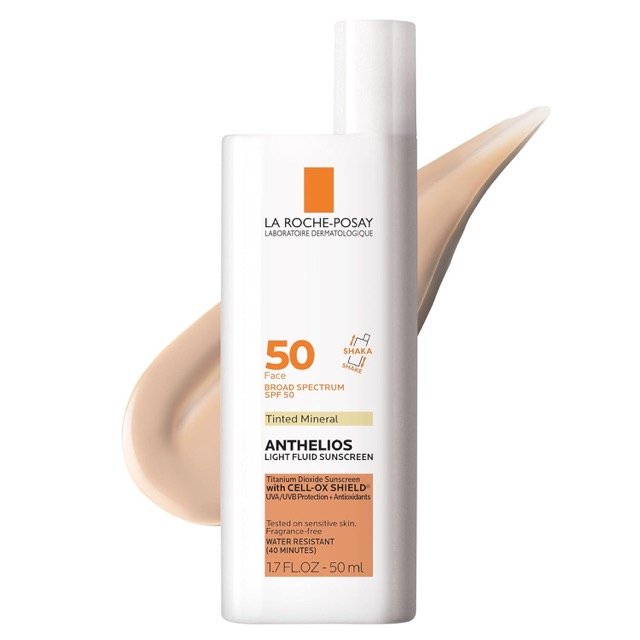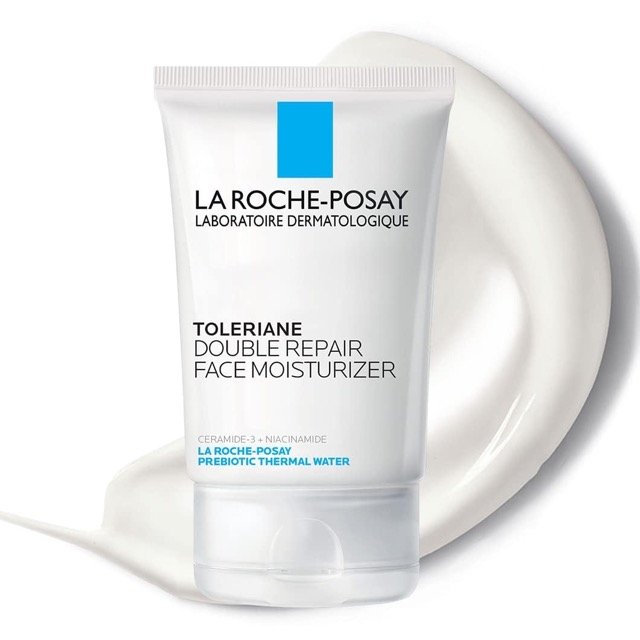Harvoni is a combination of two direct-acting antiviral drugs (Ledipasvir and sofosbuvir).
It is used to treat chronic hepatitis C infection (Genotypes 1, 4, 5, and 6) with cure rates exceeding 94%.
Harvoni (Ledipasvir and sofosbuvir) Uses:
-
Chronic hepatitis C infection:
- Treatment of chronic hepatitis C virus genotype 1, 4, 5, or 6 infections in adult and pediatric patients ≥3 years of age, without cirrhosis or with compensated cirrhosis:
- genotype 1 in adult patients with decompensated cirrhosis, in combination with ribavirin
- & genotype 1 or 4 in adult liver transplant patients without cirrhosis or with compensated cirrhosis, in combination with ribavirin.
- Treatment of chronic hepatitis C virus genotype 1, 4, 5, or 6 infections in adult and pediatric patients ≥3 years of age, without cirrhosis or with compensated cirrhosis:
-
Off Label Use of Harvoni (Ledipasvir and sofosbuvir) in Adults:
- Chronic hepatitis C, genotype 1 or 4 (kidney transplant recipients)
- Chronic hepatitis C, genotype 4, 5,
Harvoni (Ledipasvir and sofosbuvir) Dose in Adults:
Harvoni (Ledipasvir and sofosbuvir) Dose in the treatment of chronic hepatitis C infection (mono-infection or coinfected with HIV-1) : Oral:
-
Genotype 1:
- Treatment-naive patients without cirrhosis or with compensated cirrhosis (Child-Pugh class A) or peginterferon/ribavirin treatment-experienced patients without cirrhosis:
- One tablet OD for 12 weeks.
- Note: Treatment-naive patients without cirrhosis who have hepatitis C virus RNA <6 million units/mL, are HIV uninfected, and non-black may be considered for therapy of 8 weeks duration.
- Treatment-naive patients without cirrhosis or with compensated cirrhosis (Child-Pugh class A) or peginterferon/ribavirin treatment-experienced patients without cirrhosis:
-
- Peginterferon/ribavirin treatment-experienced patients with compensated cirrhosis (Child-Pugh class A) (alternative regimen):
- One tablet OD with concomitant ribavirin for 12 weeks.
- NS3 protease inhibitor + peginterferon/ribavirin treatment-experienced patients:
- Without cirrhosis: One tablet OD for 12 weeks.
- With compensated cirrhosis (Child-Pugh class A) (alternative regimen):
- One tablet OD once daily with concomitant ribavirin for 12 weeks.
- Non-NS5A inhibitor, sofosbuvir-containing regimen-experienced patients without cirrhosis (except in cases of simeprevir failure) (alternative regimen):
- One tablet OD with concomitant ribavirin for 12 weeks.
- Decompensated cirrhosis (Child-Pugh class B or C):
- One tablet OD with concomitant ribavirin for 12 weeks; if ribavirin ineligible, one tablet OD for 24 weeks.
- Decompensated cirrhosis (Child-Pugh class B or C) in patients with prior sofosbuvir treatment failure:
- One tablet OD with concomitant ribavirin for 24 weeks.
- Liver transplant recipients (treatment-naive and treatment-experienced) without cirrhosis or with compensated cirrhosis (Child-Pugh class A) :
- One tablet OD with concomitant ribavirin for 12 weeks.
- Liver transplant recipients with decompensated cirrhosis (Child-Pugh class B or C) (off label use):
- One tablet OD with concomitant ribavirin for 12 weeks.
- Kidney transplant recipients (treatment-naive and treatment-experienced) without cirrhosis or with compensated (Child-Pugh class A) cirrhosis (off-label use):
- One tablet OD for 12 weeks.
- Peginterferon/ribavirin treatment-experienced patients with compensated cirrhosis (Child-Pugh class A) (alternative regimen):
-
Genotype 4:
- Treatment-naive patients without cirrhosis or with compensated cirrhosis (Child-Pugh class A) and peginterferon/ribavirin treatment-experienced patients without cirrhosis:
- One tablet OD for 12 weeks.
- Peginterferon/ribavirin treatment-experienced patients with compensated cirrhosis (Child-Pugh class A) (alternative regimen):
- One tablet OD with concomitant ribavirin for 12 weeks.
- Decompensated cirrhosis (Child-Pugh class B or C) (off-label use):
- One tablet OD with concomitant ribavirin for 12 weeks; if ribavirin ineligible, one tablet OD for 24 weeks.
- Decompensated cirrhosis (Child-Pugh class B or C) in patients with sofosbuvir treatment failure (off-label use):
- One tablet OD with concomitant ribavirin for 24 weeks.
- Liver transplant recipients (treatment-naive and treatment-experienced) with compensated (Child-Pugh class A) cirrhosis or without cirrhosis:
- One tablet OD with concomitant ribavirin for 12 weeks.
- Liver transplant recipients (treatment-naive and treatment-experienced) with decompensated cirrhosis (Child-Pugh class B or C) (off-label use):
- One tablet once daily with concomitant ribavirin for 12 weeks.
- Kidney transplant recipients (treatment-naive and treatment-experienced) without cirrhosis or with compensated (Child-Pugh class A) cirrhosis (off-label use):
- One tablet OD for 12 weeks.
- Treatment-naive patients without cirrhosis or with compensated cirrhosis (Child-Pugh class A) and peginterferon/ribavirin treatment-experienced patients without cirrhosis:
-
Genotype 5 or 6:
- Treatment-naive and peginterferon/ribavirin treatment-experienced patients without cirrhosis or with compensated cirrhosis (Child-Pugh class A):
- One tablet OD for 12 weeks.
- Decompensated cirrhosis (Child-Pugh class B or C) (off-label use):
- One tablet OD with concomitant ribavirin for 12 weeks; if ribavirin ineligible, one tablet OD for 24 weeks.
- Decompensated cirrhosis (Child-Pugh class B or C) in patients with sofosbuvir treatment failure:
- One tablet OD with concomitant ribavirin for 24 weeks.
- Liver transplant recipients (treatment-naive and treatment-experienced) with or without cirrhosis, including decompensated cirrhosis (off-label use):
- One tablet OD with concomitant ribavirin for 12 weeks.
- Treatment-naive and peginterferon/ribavirin treatment-experienced patients without cirrhosis or with compensated cirrhosis (Child-Pugh class A):
Harvoni (Ledipasvir and sofosbuvir) Dose in Children:
Note: Prior to initiating therapy, test patient for evidence of hepatitis B infection (current or prior).
Harvoni (Ledipasvir and sofosbuvir) dose and duration of treatment in patients with chronic hepatitis C infection (mono-infection or co-infected with HIV-1):
-
Children ≥3 years and Adolescents:
-
Patient weight:
-
<17 kg:
- Pellets: Oral: 33.75 mg ledipasvir/150 mg sofosbuvir once a day.
-
17 to <35 kg:
- Pellets, tablets: Oral: 45 mg ledipasvir/200 mg sofosbuvir once a day.
-
≥35 kg:
- Pellets, tablets: Oral: 90 mg ledipasvir/400 mg sofosbuvir once a day.
-
-
Duration of Treatment:
- Duration of therapy depends upon multiple factors (eg, genotype, hepatic function [cirrhosis/compensation], previous treatment, and response).
Note: Treatment-experienced patients are defined as those who have failed an interferon-based regimen.
-
Genotype 1:
- Treatment-naive patients without cirrhosis or with compensated cirrhosis (Child-Pugh class A) or treatment-experienced patients without cirrhosis:
- 12 weeks.
- Treatment-experienced patients with compensated cirrhosis (Child-Pugh class A):
- 24 weeks.
- Treatment-naive or treatment-experienced with decompensated cirrhosis (Child-Pugh class B or C):
- 12 weeks in combination with ribavirin.
- Treatment-naive patients without cirrhosis or with compensated cirrhosis (Child-Pugh class A) or treatment-experienced patients without cirrhosis:
-
Genotype 1 or 4:
- Treatment-naive or treatment-experienced liver transplant recipients without cirrhosis or with compensated cirrhosis (Child-Pugh class A):
- 12 weeks in combination with ribavirin.
- Treatment-naive or treatment-experienced liver transplant recipients without cirrhosis or with compensated cirrhosis (Child-Pugh class A):
-
Genotype 4, 5, or 6:
- Treatment-naive and treatment-experienced patients without cirrhosis or with compensated cirrhosis (Child-Pugh class A):
- 12 weeks.
- Treatment-naive and treatment-experienced patients without cirrhosis or with compensated cirrhosis (Child-Pugh class A):
Pregnancy Risk Category: B
- In animal reproduction studies, there were no adverse effects from using sofosbuvir or ledipasvir.
- Hepatitis C treatment is not recommended for the treatment of maternal infections or to reduce the chance of mother-to child transmission.
- To reduce the risk of HCV transmission, HCV-infected women with childbearing potential may want to postpone pregnancy until treatment is completed.
- Treatment should be delayed until after birth if HCV infection is discovered during pregnancy.
- Until safety and efficacy data is available, direct-acting antiviral medication should not be administered to pregnant women.
- All warnings regarding ribavirin use in combination with other contraceptives and pregnancy should be observed.
- For more information, refer to the ribavirin monograph.
Use of sofosbuvir and ledipasvir during breastfeeding
- It is unknown if breast milk contains either ledipasvir nor sofosbuvir.
- When deciding whether to discontinue or continue breastfeeding during therapy, it is important to consider the risks to infants, the benefits to the infant and the benefits to the mother.
- The spread of the hepatitis C viruses is not associated with breastfeeding.
- Breastfeeding is not recommended if the nipples become cracked or bleeding.
- HIV co-infection means that breastfeeding is not advised.
Harvoni (Ledipasvir and sofosbuvir) Dose in Kidney Disease:
-
Mild, moderate, or severe impairment:
- Dosage adjustment is not necessary.
-
End-stage renal disease requiring hemodialysis:
- Dosage adjustment is not necessary.
Harvoni (Ledipasvir and sofosbuvir) Dose in Liver disease:
- Mild, moderate, or severe impairment (Child-Pugh class A, B, or C):
- Dosage adjustment not necessary.
Common Side Effects of Harvoni (Ledipasvir and sofosbuvir):
-
Central nervous system:
- Headache
- Fatigue
-
Neuromuscular & skeletal:
- Weakness
Less Common Side Effects of Harvoni (Ledipasvir and sofosbuvir):
-
Central Nervous System:
- Irritability
- Insomnia
- Dizziness
- Depression
-
Gastrointestinal:
- Nausea
- Increased Serum Lipase
- Diarrhea
-
Hepatic:
- Hyperbilirubinemia
-
Neuromuscular & Skeletal:
- Myalgia
- Increased Creatine Phosphokinase
-
Respiratory:
- Cough
- Dyspnea
Contraindication to Harvoni (Ledipasvir and sofosbuvir):
- The US manufacturer's labeling does not list any contraindications.
- If ledipasvir/sofosbuvir is administered with ribavirin, the contraindications to ribavirin also apply.
- Information about ribavirin manufacturers.
Canadian labeling:
- Hypersensitivity to any ingredient of the formulation
Warnings and precautions
-
Diabetes:
- Patients with diabetes may experience rapid reductions in viral load due to direct-acting antiviral therapy (DAA).
- If antidiabetic drugs are given at the same dosage, this could lead to symptomatic hypoglycemia.
- Patients should be closely monitored for any changes in glucose tolerance.
- Modifications to anti-diabetic therapy might be required.
-
Hepatitis B virus activation: [US-Boxed Warning]
- Reactivation of the hepatitis B virus has been observed in HCV-infected patients.
- Some cases can lead to hepatic failure and fulminant liver disease.
- Test all patients for evidence of current or prior HBV infection prior to initiation of ledipasvir/sofosbuvir; monitor HCV/HBV co-infected patients for hepatitis flare or HBV reactivation during treatment and post-treatment follow-up.
- As soon as HBV infection is diagnosed, initiate treatment.
- HBV reactivation was reported in HBsAg-positive patients and in those with serologic evidence that resolved HBV infections (i.e. HBsAg nil and anti-HBc p). It is characterized as an abrupt increase of HBV replication and a rapid rise in serum HBV DNA levels. Patients with resolved HBV infection may experience a recurrence of HBsAg.
- Patients who are taking immunosuppressants and chemotherapeutics may have a higher risk of HBV reactivation.
Latanoprostene bunod: Drug Interaction
|
Bimatoprost |
The concomitant use of Bimatoprost and Latanoprostene Bunod may result in increased intraocular pressure. |
|
Nonsteroidal Anti-Inflammatory Agents |
May diminish the therapeutic effect of Prostaglandins (Ophthalmic). Nonsteroidal Anti-Inflammatory Agents may also enhance the therapeutic effects of Prostaglandins (Ophthalmic). |
|
Nonsteroidal Anti-Inflammatory Agents (Ophthalmic) |
May diminish the therapeutic effect of Prostaglandins (Ophthalmic). Nonsteroidal Anti-Inflammatory Agents (Ophthalmic) may enhance the therapeutic effect of Prostaglandins (Ophthalmic). |
Monitoring parameters:
- Baseline (within 12 weeks prior to treatment initiation) CBC, INR, hepatic function (albumin, total and direct bilirubin, ALT, AST, alkaline phosphatase), calculated GFR
- Baseline (obtain any time prior to treatment initiation) hepatitis C virus (HCV) genotype and subtype, quantitative HCV viral load.
-
During treatment;
- Monitor CBC, serum creatinine, calculated GFR, hepatic function panel (after 4 weeks of therapy and as clinically indicated)
- Quantitative HCV viral load testing (after 4 weeks of therapy and at 12 weeks after completion of therapy).
- If quantitative HCV viral load is detectable at treatment week 4, repeat testing is recommended after 2 additional weeks of treatment (treatment week 6).
- If used in combination with amiodarone (or in patients who discontinued amiodarone just prior to initiating ledipasvir/sofosbuvir), inpatient cardiac monitoring for the first 48 hours of coadministration, then outpatient or self-monitoring of heart rate daily through at least the first 2 weeks of treatment.
- Hepatitis B surface antigen and hepatitis B core antibody prior to initiation; in patients with serologic evidence of hepatitis B virus (HBV) infection
- Monitor for clinical and laboratory signs of hepatitis flare or HBV reactivation during treatment and during post-treatment follow-up.
How to administer Harvoni (Ledipasvir and sofosbuvir)?
- Oral:
- Tablets:
- Administer with or without food.
- Pellets:
- Administer with or without food. May be sprinkled on 1 or more spoonfuls of nonacidic soft foods (eg, pudding, chocolate syrup, mashed potatoes, ice cream) at or below room temperature; mix gently.
- Swallow entire contents within 30 minutes of mixing
- Do not chew to avoid bitter aftertaste.
- Tablets:
Mechanism of action of Harvoni (Ledipasvir and sofosbuvir):
- Ledipasvir blocks the HCV NS5A protein, which is necessary for viral replication
- Sofosbuvir is a prodrug converted to its pharmacologically active form (GS-461203), inhibits NS5B RNA-dependent RNA polymerase, also essential for viral replication, and acts as a chain terminator.
Notification:
-
- Pediatric patients aged >=3 years are similar to adults in terms of pharmacokinetic profiles.
Absorption:
- Ledipasvir and sofosbuvir are well absorbed
Protein binding:
- Ledipasvir: >99.8%
- Sofosbuvir: ~61% to 65%
Metabolism:
- Ledipasvir: Slow oxidative metabolism via an unknown mechanism
- Sofosbuvir: Hepatic; forms pharmacologically active nucleoside (uridine) analog triphosphate GS-461203; Dephosphorylation results in the formation of nucleoside inactive metabolite GS-331007
Half-life elimination:
- Ledipasvir: 47 hours
- Sofosbuvir: ~0.5 hours
Time to peak:
- Ledipasvir: 4 to 4.5 hours
- Sofosbuvir: ~0.8 to 1 hour
Excretion:
- Ledipasvir:
- Feces (~86%)
- urine (1%)
- Sofosbuvir:
- Urine (80%)
- feces (14%)
International Brands of Ledipasvir and sofosbuvir:
- Harvoni
- Atcosodivir
- Harvocee
- Harvoni
- Ledisbuvir
- Ledvir
- Lesovir
- Lesovir-C
- Napcovir
- Twinvir
Ledipasvir and sofosbuvir Brand Names in Pakistan:
No Brands Available in Pakistan.







